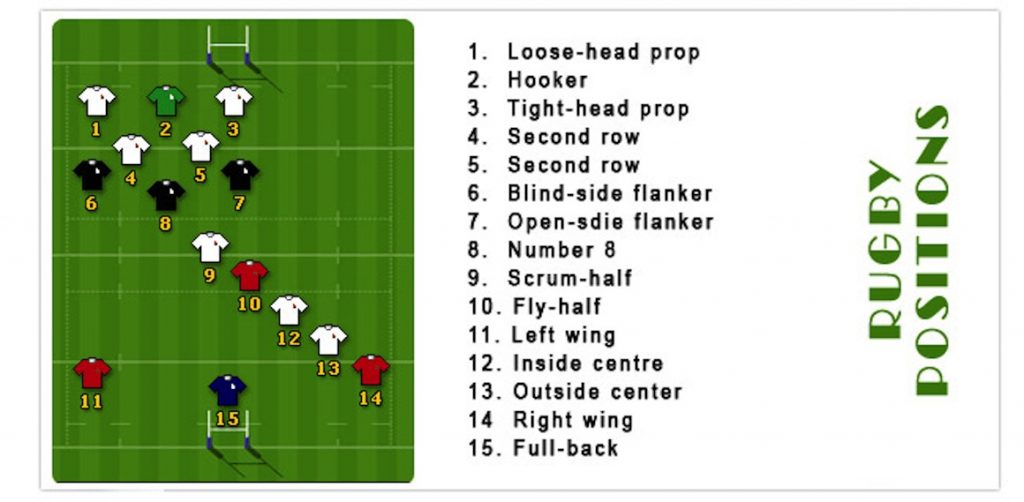With the Rugby World Cup well underway, Mark Harrod Ltd have collated the most frequently asked questions to help you improve your Rugby knowledge at such an important time!
Who Invented Rugby?
Although it may feel like it, Rugby hasn’t been around forever. Starting in about 1823 at a School in Rugby, Warwickshire, it’s said that it was invented during a game of Football. 16-year-old William Webb Ellis, supposedly caught the ball during a football match and proceeded to run towards the opponent’s goal. This is where Rugby was born.
What’s the difference between Rugby League and Rugby Union?
There are a few distinct things which differ Rugby League from Rugby Union.
Number of Players
The first and most obvious difference is the number of players per team. In Rugby League, there are thirteen players a side and a maximum of ten substitutions is allowed per team. However, in Rugby Union each side has fifteen players and is allowed seven substitutions.
Scoring of Points
| Try | Penalty | Drop Goal | |
| Rugby League | 4 points | 2 points | 1 point |
| Rugby Union | 5 points | 3 points | 3 points |
In both games, players are awarded points for methods of scoring such as penalties, tries and drop goals. These are the same in both games but the amount of points awarded does differ between Rugby League and Union.
Tackling
In both divisions of Rugby, there are different rules which players must follow when they are tackled. In Rugby League, a player must place the ball in between their legs and roll it back to a team mate with their foot. This is allowed six times per team. If they have failed after these six times to score a try, they must kick the ball towards the opposing team.
In Rugby Union, a player must also release the ball when tackled but then any player (from either team) is allowed to pick the ball up – as long as they are on their feet. Because of this, Union players tend to compete on the ground which is known as a ‘ruck’. In a ruck you may see players trying to keep opposing players on the ground so they can’t get up and get the ball.
How do you Score Points in Rugby?
There are four different ways of scoring in Rugby. Knowing these can make playing or watching much easier to understand.
A Try
The most reputable method of scoring is a try. A try basically means to touch the ball down in the opponent’s goal area or goal line. Doing this not only scores your team points, but it also awards you with an attempt to a conversion kick.
A Conversion Kick
After being rewarded a try you have the chance for a conversion kick, this is a chance to gain additional points for your team. A conversion kick is taken in lone from where the ball was originally grounded.
Dropped Goal
A dropped goal occurs when a player drops the ball on the ground and then kicks it just as it bounces. If this goes through the uprights then oints will be rewarded.
Penalty Kick
In Rugby, penalties are given for various things which can be used to take a kick at the goal.
What positions can you play in Rugby?
Rugby isn’t a simple as other sports. Depending on a player’s position, they will almost certainly have a different body shape, size and structure compared to someone down the field.
Based on Rugby Union, positions are split into two main categories – forwards (numbered 1-8) and backs (numbered 9-15). Depending on your strengths and weaknesses, you will either be best suited to a position in the forwards or the backs.
image via ruck.co.uk
Forwards
If you’re a forward, your position is required to move the ball as close to the opposing goal-line as possible. Your body will usually be much bigger, heavier and stronger than other players because of the strength needed to defend against bigger players on the other team.
A ‘scrum’ is where forwards from both teams bind tightly together in a pack and push against each other in order to gain control of the ball. You should be low to the ground and have a parallel back. Doing this helps you push more efficiently and avoids the chances of your pack weakening.
Another common set-piece that forwards carry out is called a ‘line-out’. A line-out is where the forwards compete for the possession of the ball after the ball has gone out of play. A line-out requires tall, strong players who can leap for the ball or assist other players in doing so.
Backs
The backs play behind the forwards and are usually lighter and faster. The most successful backs are the players who are skilled at passing, kicking and have great ability to catch a kicked ball.
Centre backs are the key attacking players on a team. Their aim is to break through the defensive line and link successfully with the wingers. The wingers are usually among the fasted players in a team, they are usually the players who score the most tries.
Where is Rugby Popular in the World?
Based on Google Trends, Rugby is most popular in Fiji. For Fiji, a country home to less than 900,000 people, many of whom live in deep poverty, winning the 2016 Rugby Sevens was a dream come true and perhaps is why Rugby is such a memorable sport for them.
How often is the Rugby World Cup?
The first final of the Rugby World Cup was contested back in June 1987 and has been happening every four years since. With 20 teams in each tournament and 93 qualifying, the Rugby World Cup is held over seven weeks.
Who is the most successful country in Rugby?
New Zealand are the most successful country for Rugby, winning the World Cup three times. Australia and South Africa have both won twice. Next would be England, winning back in 2003. The current world No.1 team is New Zealand.
We hope you enjoyed our article! For a look at some of the rugby equipment, we offer including Rugby posts and balls follow the link.
[ssba]


